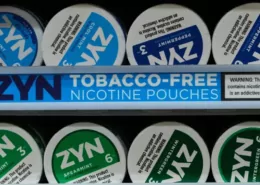Greece at a Crossroads: Will a Vape Flavour Ban Derail Smoking Cessation Progress?
Greece, a nation historically grappling with one of the highest smoking rates in the European Union, finds itself at a critical juncture in its tobacco control policy. After making commendable strides in reducing smoking by embracing tobacco harm reduction principles, the government is now reportedly considering a ban on vaping flavours. This potential move has sparked significant concern among public health advocates and vapers, who warn it could reverse hard-won progress and push smokers back to deadly combustible cigarettes.
A Tale of Two Trends: Greece’s Smoking Rates Before and After Harm Reduction
For years, Greece struggled with persistently high smoking prevalence. Data from Eurostat painted a concerning picture: while many EU nations saw smoking rates decline, Greece experienced an increase, rising from 38% in 2015 to a staggering 41% in 2021. This trajectory stood in stark contrast to countries like Sweden, which, by embracing harm reduction alternatives like snus and nicotine pouches, is now on the verge of achieving “smoke-free” status (defined as less than 5% smoking prevalence).
However, a significant shift occurred in Greece around 2019. By officially adopting tobacco harm reduction as a key pillar of its national strategy, the country began to see a reversal of the upward smoking trend. The smoking rate has since dropped to 36%. While still high compared to some EU counterparts, this decline represents a notable public health achievement, especially when compared to the stagnation or even regression observed in other EU countries that have taken a more prohibitive stance on safer nicotine alternatives.
The Proposed Flavour Ban: A “Deeply Misguided Move”?
Despite this positive momentum, the Greek government is now contemplating a ban on the sale of flavored e-liquids for vaping. Proponents of harm reduction view this as a “deeply misguided move” that fails to recognize the critical role flavors play in helping adult smokers transition away from combustible cigarettes and, crucially, stay smoke-free.
Flavors are consistently cited by former smokers as a key reason they were able to successfully switch to vaping. The variety of non-tobacco flavors (fruits, desserts, menthols, etc.) helps to break the association with the taste of traditional cigarettes, making the switch more appealing and sustainable. Data consistently shows that only a small percentage of adult vapers (around 2.1% according to some reports) exclusively use tobacco-flavored e-liquids; the vast majority prefer and rely on other flavors.
Challenging the “Gateway” Argument
One of the primary arguments used to justify flavor bans is the “gateway theory” – the claim that flavored vapes attract young people to nicotine and subsequently lead them to start smoking traditional cigarettes. However, advocates against the ban argue that Greek data does not support this assertion. They point to statistics indicating that an overwhelming 98% of all nicotine consumers in Greece initiated their nicotine use with combustible cigarettes. Only a very small fraction (around 1%) started with vaping, nicotine pouches, or heated tobacco products. This suggests that policymakers considering a flavor ban to protect youth might be targeting the wrong product and overlooking the primary entry point into nicotine addiction for most users in Greece.
The Perils of Prohibition: Lessons from Other EU Countries
Greece would not be the first EU country to implement a vape flavor ban. Seven other EU nations – Denmark, Estonia, Finland, Hungary, Lithuania, the Netherlands, and Slovenia – have already enacted such prohibitions, with Spain and Belgium also considering similar measures. The results, according to harm reduction advocates, have been largely negative and counterproductive:
- Growth of Black Markets: In Denmark, for instance, a survey by the Tholos Foundation found that 93% of vapers reported it was still easy to find banned flavors. This indicates that demand doesn’t disappear; it simply shifts to unregulated, illicit channels, fueling a thriving black market. These black market products lack quality control and safety standards, posing greater risks to consumers.
- Increased Smoking Rates: Perhaps most concerning is the potential for flavor bans to drive former smokers back to cigarettes. In Quebec, Canada (though not an EU member, often cited as an example), a reported 36% of individuals who had switched to vaping returned to smoking just six months after a flavor ban was implemented. This directly undermines public health goals.
- Undermining Law Enforcement: Widespread illicit markets make enforcement more difficult and divert resources that could be used for other public safety priorities.
By pushing adult vapers, many of whom successfully quit smoking thanks to flavored alternatives, towards either the black market or back to combustible cigarettes, a flavor ban could endanger lives and disregard substantial scientific evidence on harm reduction.
The EU’s Broader Approach and Sweden’s Success
Critics argue that the EU’s overall approach to tobacco harm reduction is falling short of its goals. The EU aims for a 5% smoking rate by 2040. However, based on current trends (again, citing Eurostat), it’s projected that this target might not be reached until the year 2100 – a full 60 years late. This slow progress is contrasted sharply with Sweden’s success. By embracing harm reduction strategies, particularly the widespread availability and acceptance of snus and nicotine pouches as alternatives to smoking, Sweden is on the brink of becoming the first officially “smoke-free” nation in the EU.
The Science and Consumer Voice on Flavors
Scientific evidence increasingly supports the role of flavors in smoking cessation. Some studies suggest that access to a variety of appealing flavors increases the likelihood of quitting smoking by as much as 230% when using vaping as a tool. The lived experiences of vapers also underscore this. The World Vapers’ Alliance (WVA) has collected over 100,000 signatures on a petition against a European flavor ban. Furthermore, a 2023 public consultation by the EU Commission reportedly showed that a majority of respondents support access to harm reduction products, including those with flavors.
Conclusion: Supporting Harm Reduction, Not Undermining It
If Greece is genuinely committed to reducing its smoking rates and protecting public health, harm reduction advocates argue that it must continue to support evidence-based strategies, not undermine them with misguided prohibitions like a vape flavor ban. Banning flavors, they contend, ignores scientific evidence, disregards the preferences and successes of hundreds of thousands of adult ex-smokers who quit using flavored vapes, and risks significant negative public health consequences.
Instead of prohibition, a more effective approach would involve robust, risk-proportionate regulation: ensuring product safety, strictly enforcing age restrictions to prevent youth access, and providing adult smokers with accurate information about the relative risks of different nicotine products. By learning from the successes of countries like Sweden and the negative outcomes of flavor bans elsewhere, Greece has an opportunity to solidify its recent progress and continue its journey towards a healthier, smoke-freer future by embracing, rather than restricting, effective harm reduction tools.
- Malaysia Negeri Sembilan Backs Vape Ban, Awaits Clear Laws - August 5, 2025
- Is It Illegal to Vape or Smoke While Driving in Massachusetts? - August 5, 2025
- Austria Plans to Ban Disposable E-Cigarettes - August 5, 2025








